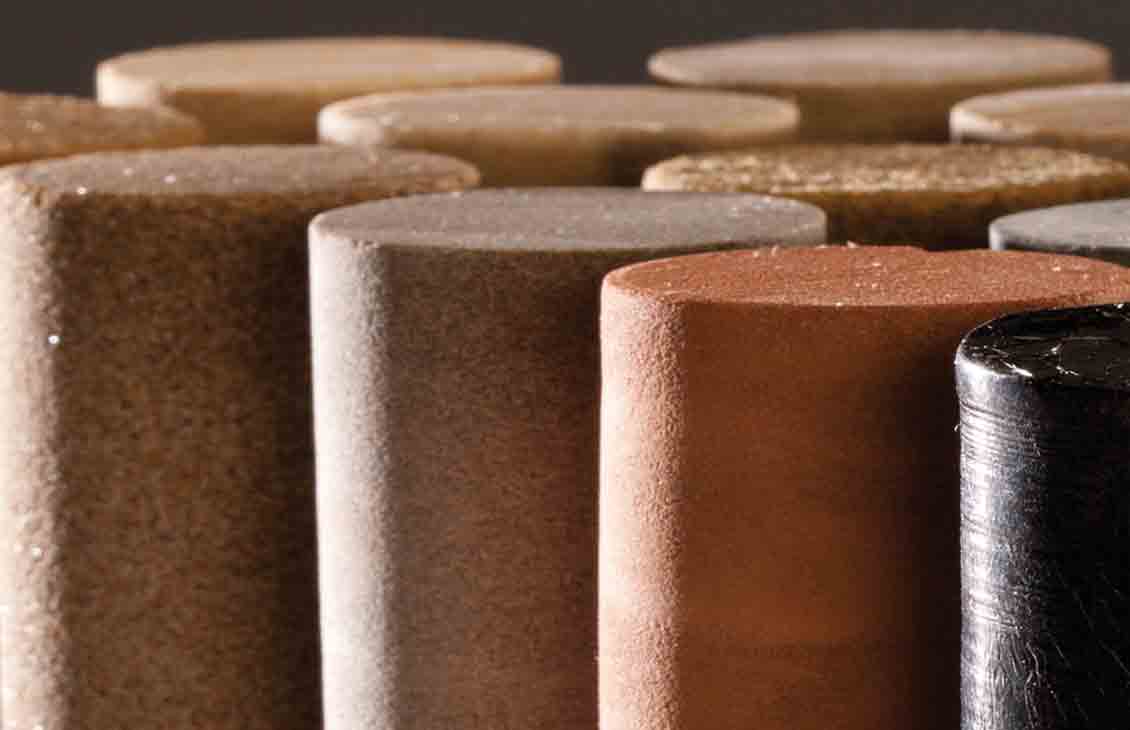ASTM D6032 Standard Test Method for Determination of Stress-Strain Properties of Rock Cores
The ASTM D6032 standard test method is a comprehensive procedure designed to determine the stress-strain properties of rock cores. This testing is crucial in understanding the mechanical behavior of rocks under various loading conditions, which is vital for the oil and gas industry during exploration, drilling, and production activities.
Understanding these properties helps engineers design wellbores that can withstand the pressure and strain exerted by the surrounding formation. The test method allows for precise measurements of elastic modulus (Young's Modulus), shear modulus, bulk modulus, and Poisson’s ratio under uniaxial loading conditions. These parameters are essential in predicting rock deformation and failure during drilling and hydraulic fracturing operations.
The testing procedure involves preparing cylindrical rock cores according to ASTM D6032 specifications. The specimens must be cut from the same core at a depth that ensures they represent the target stratum's mechanical properties accurately. Once prepared, the specimens are mounted in a testing fixture where uniaxial stress is applied while strain measurements are taken using extensometers.
The ASTM D6032 method specifies precise criteria for sample preparation and testing to ensure accuracy and repeatability of results. It provides detailed guidelines on specimen dimensions, loading rates, temperature control, and data recording protocols. This ensures that the test results can be relied upon for making informed decisions in oil and gas operations.
Implementing ASTM D6032 is not just about following a set of procedures but also understanding their significance in the broader context of reservoir characterization. The stress-strain properties determined through this method help in predicting rock behavior under different conditions, which is essential for optimizing drilling plans and enhancing production efficiency.
| Test Parameter | Description |
|---|---|
| Elastic Modulus (Young's Modulus) | Measure of a material’s stiffness; indicates how much the rock will deform under stress. |
| Poisson’s Ratio | Ratio of lateral strain to axial strain; helps in understanding the anisotropic nature of rocks. |
| Shear Modulus | Measure of a material's resistance to shearing deformation; critical for assessing rock stability during drilling. |
| Bulk Modulus | Measure of a material’s resistance to compression under hydrostatic pressure; important for evaluating reservoir compaction. |
The test results are reported in terms of the stress-strain curve, which provides a graphical representation of how much strain occurs at various levels of applied stress. This information is invaluable for reservoir engineers and geologists as it aids in predicting rock behavior under different operational conditions.
Applied Standards
The ASTM D6032 standard test method aligns with several international standards that collectively form the backbone of quality assurance and compliance in the oil and gas industry. These include:
- ASTM D6032 - Standard Test Method for Determination of Stress-Strain Properties of Rock Cores.
- ISO 178:2019 - General principles with respect to tensile testing of plastics and other rigid materials.
- ASTM D638 - Standard Test Method for Determining the Tensile Properties of Plastics.
The alignment with these standards ensures that the testing methods are consistent and comparable across different laboratories, promoting reliability and trust in the results. Compliance with ASTM D6032 is particularly important as it directly impacts the safety and efficiency of oil and gas operations by providing accurate data on rock mechanical properties.
Scope and Methodology
The scope of ASTM D6032 includes the determination of stress-strain properties of rock cores under uniaxial loading conditions. The methodology involves several steps, starting with specimen preparation as per ASTM D6032 guidelines:
- Coring from a stratigraphic target depth.
- Trimming to a standard diameter and length.
- Grinding the core surface to achieve smooth, parallel planes for accurate measurements.
The testing process then involves mounting the specimen in a uniaxial compression testing machine. The machine applies stress gradually while strain is monitored using extensometers. Data collection includes stress-strain curves that are used to calculate elastic modulus, Poisson’s ratio, shear modulus, and bulk modulus.
Temperature control during testing is essential as it affects the mechanical properties of rocks. ASTM D6032 specifies a temperature range within which tests should be conducted for accurate results. The entire procedure is documented meticulously to ensure traceability and reproducibility.
Industry Applications
- Reservoir Characterization: Determining rock properties helps in understanding the reservoir's potential for hydrocarbon recovery.
- Wellbore Design: Accurate stress-strain data aids in designing wellbores that can handle the mechanical stresses encountered during drilling.
- Drilling Optimization: Understanding rock behavior under different loading conditions optimizes drilling parameters to reduce costs and enhance efficiency.
- Hydraulic Fracturing: The stress-strain properties are crucial for designing effective hydraulic fracturing treatments that maximize fracture growth while minimizing damage to the formation.
- Seismic Wave Velocity Studies: Stress-strain data can be used in conjunction with seismic wave velocity measurements to infer rock mechanical properties and improve reservoir modeling.
- Safety Assessment: Ensuring that wellbores are designed to withstand the mechanical stresses helps prevent accidents during drilling operations.
The ASTM D6032 standard test method is a cornerstone in these applications, providing reliable data that supports critical decisions throughout the oil and gas exploration and production lifecycle.





